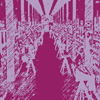
5. Conclusion
Given that many course and learning management systems (C/LMSs) reinscribe teacherly roles in virtual spaces, the need to critique such spaces must be balanced with the need to design technologically and pedagogically supported virtual spaces for diverse student learning needs. If students are continually positioned as people under surveillance and control, they may learn to privilege authoritative models over their own needs and opportunities for growth. Although the responsibilities of teachers are increasing in today's market-driven university models of higher education, writing instructors must use their historical and pedagogical knowledge to shape both the discourse and production of C/LMSs for students in their classes. Educators already rely upon a range of existing websites available to democratize the virtual classroom, but may also collaborate with a community of programmers, marketers, and communication experts to design student-centered learning spaces.
Computers and writing scholars have generated pragmatic, collaborative approaches for subverting virtual hierarchies for well over two decades. For example, Selfe and Selfe (1994) offered three recommendations for challenging the power structure of computer interfaces that we see as upholding a cyberfeminist critique and negotiation of online learning spaces:
- Teachers must "recognize and teach students to recognize" the ideological assumptions technological interfaces privilege and squander (455)
- Teachers must "work with students and computer specialists to re-design/re-imagine/re-create interfaces" that afford diversity and inclusion (455)
- Teachers must seek out collaborative opportunities with others who possess other expertise and work together to "revise interfaces as texts by identifying desirable features generally unavailable in primary interfaces." (499)
Selfe and Selfe's (1994) recommendations are clearly aligned with the goals of cyberfeminist critique and action in online spaces, in that they connect strongly to Hocks's (2009) questions regarding the identification of power relationships. Hocks (2009), along with Selfe and Selfe (1994), urged educators to question how such relationships control the ability for students, regardless of gender, to construct personal and professional identities; share responsibility for the format and content of the virtual classroom as a collaborative knowledge-making space; and do so in a range of design modalities that meet the learning styles and information access needs of a broader range of learners.
Certainly, virtual learning spaces should provide students with opportunities to compose in a variety of modes while simultaneously experiencing a variety of teaching methods, enabling greater inclusion and accessibility to a range of student learners. Thus, our goal in this chapter has been that our critique, analysis, and call for alternative virtual learning environments (whether they be existing spaces or newly designed) push against the foundations of surveillance and control within the digital spaces students and teachers currently inhabit, as both Hocks (2009) and Wilding (2004) encourage us to do in order to make room for a range of learners, learning styles, and digital composing methods.
We also see merit in working with colleagues to create learning management systems that allow students to use online spaces for their own learning needs and goals. Future research and projects with computer programmers, writing instructors, business-marketing experts, students, and educators from various disciplines will encourage development of C/LMS platforms and tools to transform online curricular spaces. In creating these spaces, we encourage educators to think big—design C/LMSs for both alphabetic and multimodal compositions, and circulate such virtual spaces to large national markets for the benefit of many students and educators. The design of a transformative learning management system, most importantly, rests with student feedback and input. Thus, any work in designing such spaces must include student engagement at all stages of the project, a process inherently feminist in principle. That said, with the intention of being inclusive of various options for subverting existing C/LMS platforms in use by our writing studies colleagues, Tiffany Koszalka and Radha Ganesan (2004) remind us that our efforts to subvert virtual spaces must move beyond the well intentioned to the well-conceived. In other words, as Koszalka and Ganesan posited,
integrating sound instructional design principles that work well in classroom-based courses may not be successful in online courses if course philosophy, learning expectations, and online features are not well matched. Using learning goals and an understanding of the value of C/LMS features can help inform distance education in ways that are more likely to support learning, rather than impede it. (255)
Important in Koszalka and Ganesan's approach to C/LMSs use is their attention to designing and using online spaces in ways that support both learning goals and an instructor's course philosophy, as well as foster accessibility for diverse learning preferences and needs. Thus, we share Koszalka and Ganesan's (2004) work to further substantiate our claim for the need for cyberfeminist pedagogues to be mindful designers of online learning spaces, in order to effectively best facilitate student learning and one's instructional goals regardless of tool. Indeed, as Takayoshi (1994) stressed, students and teachers require encouragement, freedom, and multiple opportunities to use the "master's tools" for their own curricular and pedagogical purposes, and in ways that are potentially transformative. Such use of the "master's tools"—whether C/LMSs, MOOCs, or web 2.0—subverts more managerial and hierarchical power structures, proving that all tools and all spaces can be shaped by user values. In this way, we encourage both current and future educators to uphold Takayoshi's eloquent, early cyberfeminist call that teachers offer students " technology as a tool with which to build new houses—houses with open doors and windows and space for everyone" (1994, 33).
1. Introduction
2. Our historical quest for safe spaces
3. Contested spaces
4. Taking back the spaces
5. Conclusion
6. References
